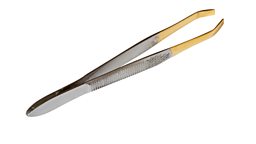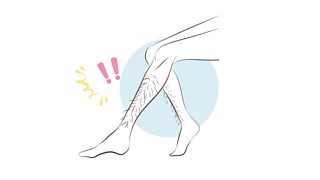The celebrity who is changing the way we see female facial hair
It hurts, it’s expensive and it’s time consuming - so why do so many women feel like they have to remove their facial hair? And it’s still such a taboo topic that even women experiencing the same anxiety around facial hair don’t really talk about it – even amongst friends.
In Peach Fuzz, Mona Chalabi is asking why female facial hair still seems to be a source of such shame, and she meets one celebrity who has found fame through ‘going natural’. Could things be about to change?

-
![]()
Peach Fuzz
Mona Chalabi asks why female facial hair still seems to be a source of such shame.
A multi-million dollar industry
Women bleach it, wax it, shave it, thread it, pluck it and laser it. In fact, Women’s Health Magazine claims that ladies with facial hair spend an average of 104 minutes per week managing it.
One business making money from women’s insecurity around facial hair is Jolen hair bleach. The factory opened in 1964 and is still going strong. The key to their success? The product provides a relatively inexpensive way to deal with hair that is quick and painless but, crucially, can also be done in private. The founder’s goal was to make packaging that was memorable but discreet. As one employee states, facial hair removal is “still a category that has a high degree of discretion as compared to make-up and skin care products.”
Other hair removal methods come at a much higher price. Laser treatment – which works by sending the light of a laser through the pigment in the hair to damage the follicle – can cost between £40 and £400. And as Mona discovered, it also hurts.
The secret world of hair: behind the huge global industry

Emma Tarlo, Professor of Anthropology at Goldsmiths, takes Laurie Taylor on an anthropological journey of hair.
Why is removing something so natural considered socially normal?
Dr Merran Toerien teaches in the Department of Sociology at the University of York and she studied the removal of female body hair as part of her PHD.

Of the 700 women she interviewed only 20 weren’t removing hair from their bodies and many expressed disgust at their body hair. She wanted to understand how hair removal is sustained as such an incredibly powerful norm, when it really shouldn’t matter whether women have hair on their legs, underarms or face.
“One of the really overwhelming things that came through is that body hair is associated with being masculine,” says Merran, even though a vast number of women have facial hair too. “I think, really, the kinds of work that we do to remove our body hair as women, including facial hair, is really around maintaining an illusion of masculine and feminine as opposites.”
The music star who is helping natural to become the norm
As gender boundaries blur, however, there are individuals helping to dismantle the more traditional views of male and female appearance. JD Samson is a singer and performer with over 22,000 followers on Instagram and she found fame through her facial hair. She made a decision not to remove the hair on her upper lip and now sports a neat little moustache – that she’s able to be proud of.
Women’s Health Magazine claims that ladies with facial hair spend an average of 104 minutes per week managing it.
“I’m so real. I’m so natural,” says JD. “There’s something I take pride in about that.” She goes on: “I somehow have removed myself of having any shame as a woman with facial hair even though that’s what I am.”
JD is gender queer, which she admits probably makes things easier. But it was still uncomfortable in the beginning for her to flip the criticisms she faced publically and within her family and friendships. There was one thing that kept her going: “In truth it was the letters and letters and letters I received from children all over this world telling me that what I did helped them feel comfortable in their own body.” She kept going mostly because she knew there were people out there that needed to see it.
JD also doesn’t think it’s weird to remove facial hair, understanding that we all experience weaknesses in relation to cultural standards. But her choice is less expensive, less painful and less dangerous than laser beams, and hopefully sends an important message to other women that facial hair doesn’t have to be shameful.
The role of social media
Social media allows people like JD to become role models in a way that wasn’t possible in a pre-digital age. Perhaps this is where the revolution begins.
20 years ago, photographer Trish Morrissey took a series of photos called Women with Moustaches. She agrees that not much has moved on in terms of the acceptability of female facial hair, but that social media could change all that: “If one of the Kardashians decided to grow a moustache and that was going to be the new thing, would that then allow young women, or older women, to have one as well?” She’s optimistic that it could happen.
One thing is for sure. Although women still feel the implicit and explicit social pressure to remove facial hair, other areas of body image are opening up more and more. Perhaps, just maybe, pride in female facial hair is just around the corner…
Why we are obsessed with the ideal body?

How artists established rigid beauty standards and an obsession with the body that we still live with today.
-
![]()
Peach Fuzz
Mona Chalabi asks why female facial hair still seems to be a source of such shame.
-
![]()
Why is women's body hair so controversial?
Is some body hair considered more socially acceptable to see than others? And where did the taboo about this all begin?
-
![]()
The influencers of the beauty industry boom
Why the cosmetics and beauty industry has boomed.
-
![]()
How you can learn to be happier
Life lessons of happiness to learn how you can hack your happiness back.




